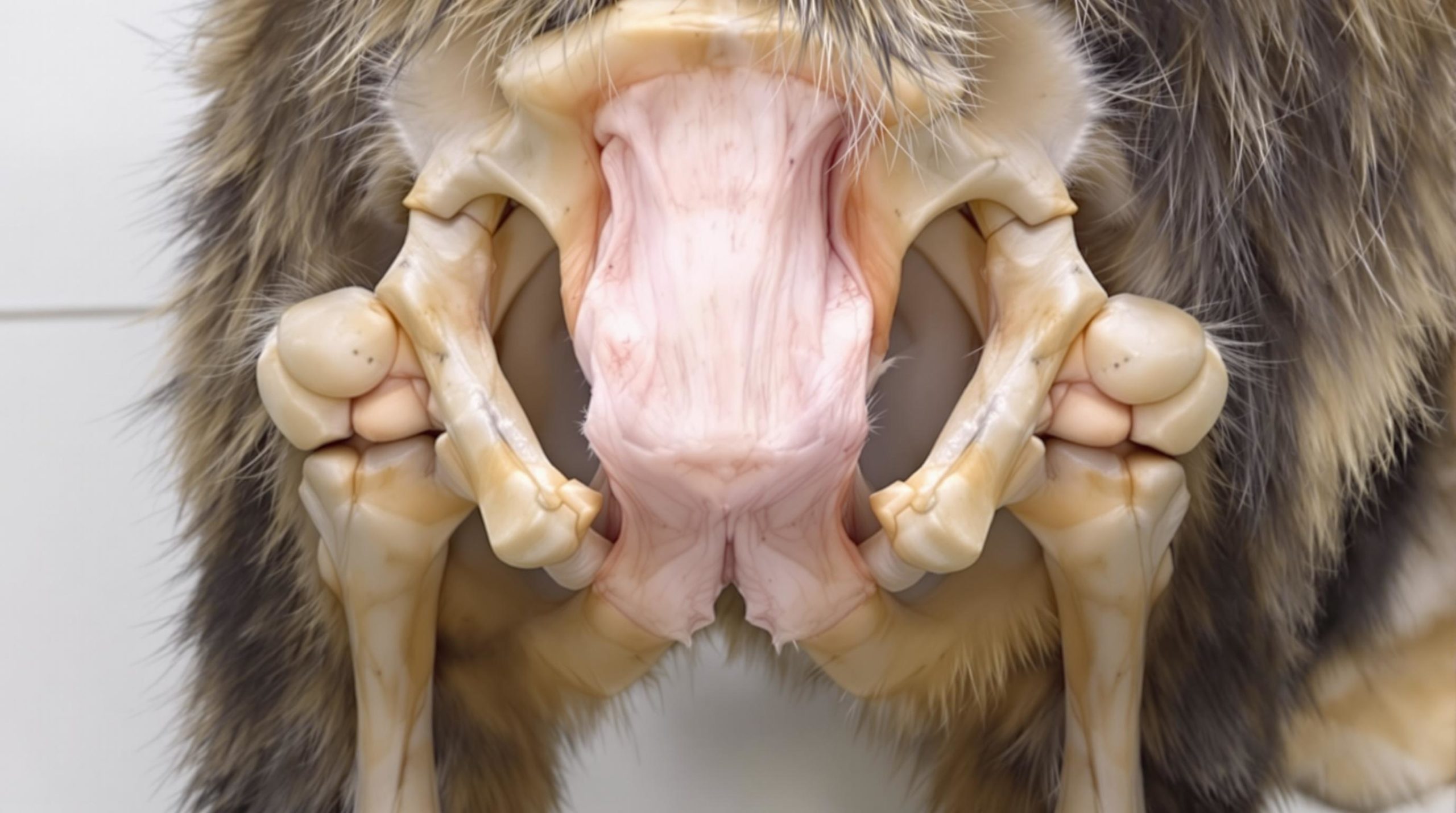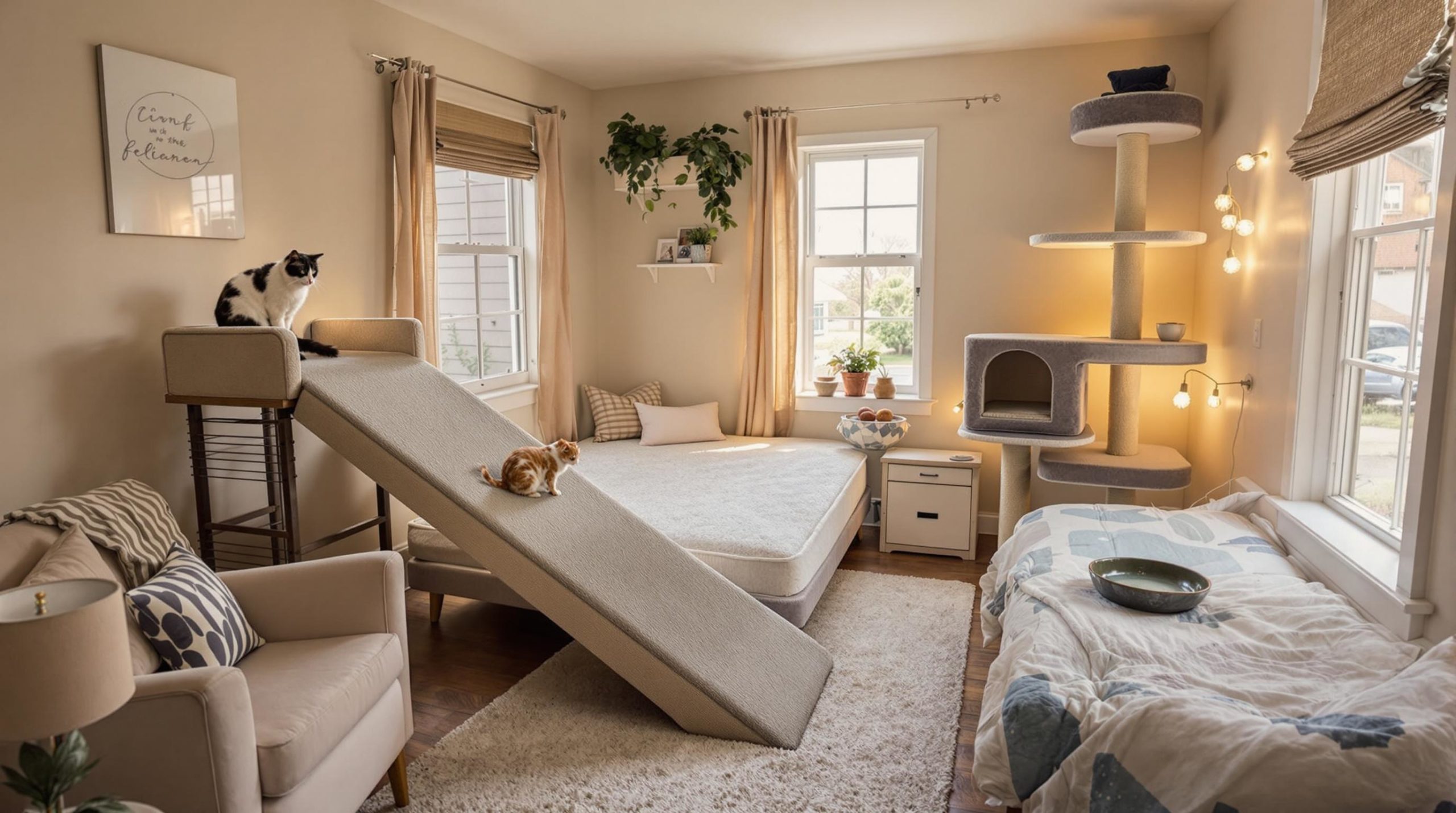Understanding hip dysplasia in Maine Coons: essential facts

The Maine Coon, known for its majestic size and affable nature, carries a certain vulnerability often overlooked by even the most devoted cat enthusiasts: hip dysplasia. This joint disorder, typically associated with large dog breeds, surprisingly has a significant impact on these gentle giants of the feline world. Understanding hip dysplasia is crucial not only for ensuring the health and happiness of Maine Coons but also for preserving the integrity of this beloved breed. This article delves deep into the essence of hip dysplasia in Maine Coons, offering insights on causes, symptoms, diagnosis, treatment, and prevention to empower owners and breeders with actionable knowledge.
What Is Hip Dysplasia in Maine Coons and Why Does It Matter?
Hip dysplasia in Maine Coons is a structural joint disorder characterized by the improper formation of the hip joint’s ball-and-socket mechanism. Unlike a properly aligned joint where the femoral head (ball) snugly fits inside the pelvic socket, affected cats exhibit a loose or irregular fit causing irritation and instability.
This abnormal joint alignment triggers a cascade of issues:
- Chronic joint pain — discomfort affecting a cat’s mobility and quality of life.
- Inflammation and swelling — which contribute to discomfort and further joint degeneration.
- Accelerated arthritis development — deterioration of cartilage leading to long-term disability.
Maine Coons, a breed celebrated for their robust bones and muscular stature, are unfortunately predisposed to this condition compared to other cat breeds. Their large frame and genetic background increase susceptibility, resulting in hip dysplasia being a significant concern within Maine Coon animal wellness discussions today.
Understanding how this condition impacts pet health is essential for detecting early signs and implementing effective veterinary care strategies. Early intervention can provide relief and enhance life quality before significant joint damage occurs. This knowledge is especially timely given that some Maine Coons grow at remarkable rates during their first year—rapid growth being a known aggravator of joint stress. For a comprehensive overview of Maine Coon growth rates and stages, owners can refer to the Maine Coon growth chart, which outlines their developmental milestones.

| Aspect | Normal Hip Joint | Hip Dysplasia |
|---|---|---|
| Joint Fit | Snug, ball securely in socket | Loose or uneven ball-socket fit |
| Mobility | Pain-free, smooth movement | Restricted, painful movement |
| Inflammation | Minimal, healthy cartilage | High due to instability |
| Long-term Risk | Low arthritis risk | Elevated arthritis and joint degeneration risk |
Why Maine Coons Are Prone: Genetics and Growth Patterns
Maine Coons’ hip dysplasia is largely a hereditary condition influenced by feline genetics. Breeding pairs carrying the defective genes may produce kittens predisposed to joint abnormalities. Additionally, the breed’s naturally rapid growth places mechanical stress on developing joints.
Proper breeding practices, including health screenings for hip issues, can substantially mitigate these risks. Responsible breeding ensures inherited conditions like hip dysplasia occur less frequently, preserving both health and breed standards. Interested readers can explore more on Maine Coon health problems to understand typical genetic challenges within this breed.
Identifying Hip Dysplasia: Key Signs Every Maine Coon Owner Must Notice
Recognition of hip dysplasia symptoms can be subtle initially but progresses if overlooked. Early detection provides a window to manage the condition effectively. Knowing what to watch for makes a world of difference.
- Limping or favoring one hind leg: A limping gait may start intermittently and worsen with time or after vigorous activity.
- Reluctance to jump or climb: Maine Coons are typically agile jumpers; hesitation or refusal may hint at joint discomfort.
- Stiffness upon rising: Difficulty standing or taking a few moments to walk smoothly after resting indicates joint distress.
- Activity reduction and withdrawal: Decreased playfulness or odd reluctance to engage in typical antics can be pain-related.
- Muscle atrophy in hindlimbs: Muscle loss from disuse often accompanies chronic pain.
- Sensitivity or aggression on touch: Pain can manifest as defensive reactions when the hips or back legs are handled.
- Abnormal posture: Arched back or limping to compensate for hip discomfort.
Attention to these signs, matched with routine health checks, forms the front line in safeguarding cats from the worsening effects of this condition. For detailed behavioral patterns, especially playful behaviors curtailed due to pain, resources like Maine Coons play behavior offer excellent insights into healthy versus affected activity levels.
| Symptom | Typical Behavior | Severity Indicator |
|---|---|---|
| Limping | Intermittent, worsens post-activity | Moderate to severe |
| Jumping avoidance | Refusal to jump on furniture or trees | Mild to moderate |
| Stiffness | Difficulty standing after rest | Mild to severe |
| Muscle wasting | Visible reduction in thigh muscle mass | Severe |
| Sensitivity to touch | Aggressive reactions or withdrawal | Moderate to severe |
How Veterinary Care Diagnoses and Confirms Hip Dysplasia
Detecting hip dysplasia is a multifaceted veterinary process. Owners who suspect issues in their Maine Coons benefit greatly from professional evaluation, fostering accurate diagnosis and treatment planning.
Here are common diagnostic tools employed in veterinary clinics:
- Physical examination: The vet manipulates the hips and legs to assess looseness, pain response, or restricted range of motion.
- Ortolani test: A specialized maneuver evaluating hip joint laxity, often under sedation for cat comfort.
- X-rays: Critical to confirm hip dysplasia and evaluate joint structure and arthritis progression.
- Advanced imaging (CT or MRI): Occasionally used for complicated diagnostic or surgical planning cases.
Timely veterinary care not only helps in confirming the diagnosis but initiates appropriate management strategies. It is essential to maintain regular health screenings—not only for hip dysplasia but for a broad picture of pet health.
Pet insurance providers increasingly recognize the importance of coverage for these hereditary conditions. Many offer plans that include orthopedic care, helping owners manage the financial aspects of veterinary treatments efficiently.
| Diagnostic Method | Purpose | When Used |
|---|---|---|
| Physical exam | Assess pain and mobility | Initial screening |
| Ortolani test | Detect hip instability | Under sedation |
| X-rays | Confirm structural abnormalities and arthritis | Standard follow-up |
| CT/MRI | Detailed joint imaging | Complex or pre-surgical evaluation |
Managing Hip Dysplasia in Maine Coons: From Home Care to Surgery
Once diagnosed, hip dysplasia management tailors to the cat’s condition and lifestyle. The goal is to relieve pain, maintain joint function, and enhance overall animal wellness.
Non-surgical options often include:
- Weight management: Maintaining a healthy weight reduces load on the hips, minimizing further joint wear.
- Pain relief medication: Non-steroidal anti-inflammatory drugs (NSAIDs) prescribed by your veterinarian help control inflammation and reduce discomfort.
- Joint supplements: Natural products containing glucosamine, chondroitin, or omega-3 fatty acids can support cartilage health.
- Environmental adaptations: Providing ramps, ramps, or stairs to ease access to beloved perches helps preserve mobility without stress.
- Physical therapy: Specialized feline therapy or hydrotherapy strengthens muscles and alleviates joint strain.
- Alternative therapies: Laser therapy and acupuncture are promising adjuncts that reduce pain and inflammation.
Surgical interventions are reserved for severe cases and include:
- Femoral Head Ostectomy (FHO): Surgical removal of the femur’s head to relieve pain; promotes development of a fibrous pseudo-joint. Functional but may limit full joint mobility.
- Total Hip Replacement (THR): Replacement of the hip joint with prosthetics; expensive and specialized but often restores excellent mobility.
Choosing the right approach depends on the cat’s pain level, age, and owner’s capacity for ongoing care. Owners should consult closely with their vets and keep abreast of evolving treatment advances.
| Treatment Type | Indicative Severity | Pros | Cons |
|---|---|---|---|
| Weight control & supplements | Mild to moderate | Non-invasive, supportive | Requires consistent care |
| Pain relief medication | Mild to severe | Effective in reducing pain | Side effects possible |
| Physical & alternative therapies | Moderate | Builds muscle, reduces pain | May need multiple sessions |
| FHO surgery | Severe | Relieves pain, cheaper than replacement | Limited joint function |
| Total Hip Replacement | Severe | Restores full mobility | High cost, specialist required |
Preventing and Living with Hip Dysplasia in Maine Coons: Practical Tips for Owners
While genetic factors can’t be changed, proactive actions help steer clear of or delay symptom onset in many Maine Coons.
- Select breeders responsibly: Choose kittens from breeders who adhere to strict health screenings and provide genetic clearance for hip dysplasia.
- Monitor diet and weight: Balanced nutrition during a kitten’s rapid growth phase is critical; avoiding overfeeding reduces undue joint stress. For kitten nurturing advice, explore nurturing guidelines here.
- Encourage controlled physical activity: Play builds strength, but care should be taken to avoid high-impact jumping and roughhousing that could cause injury.
- Regular checkups and health screenings: Early veterinary evaluations catch subtle developments before clinical signs emerge.
- Consider pet insurance: Given the potential expenses associated with orthopedic care, having insurance can ease financial burdens.
- Make home life supportive: Orthopedic beds, non-slip surfaces, and accessible climbing options keep your Maine Coon comfortable and engaged.
Since Maine Coons have a high need for interaction and stimulation, it’s essential to balance activity restrictions with mental enrichment. Resources such as Maine Coon cat characteristics help owners tailor environments that engage without risking injury.

| Prevention Strategy | Benefits | Owner Actions |
|---|---|---|
| Responsible breeding | Reduced hereditary risks | Verify breeder health clearances |
| Diet & weight control | Lower joint pressure | Feed balanced, measured meals |
| Regulated exercise | Strengthened muscles, joint support | Supervised play avoiding injury |
| Health screenings | Early detection | Schedule routine vet visits |
| Environmental support | Comfort and mobility aid | Provide ramps, orthopedic bedding |
Frequently Asked Questions About Hip Dysplasia in Maine Coons
- Q: Can hip dysplasia develop later in life even if a Maine Coon was healthy as a kitten?
A: Yes, some cats show symptoms only as adults when arthritis sets in or joint damage progresses with age. - Q: Is hip dysplasia painful for Maine Coons?
A: Absolutely. The condition causes inflammation and instability that typically result in chronic pain and discomfort. - Q: Are all Maine Coon breeders testing for hip dysplasia?
A: Responsible breeders will perform health screenings and genetic tests; however, it’s vital for buyers to request proof. - Q: Can diet alone prevent hip dysplasia?
A: While nutrition plays a role in joint health, diet cannot prevent genetically inherited hip dysplasia but can delay symptom onset. - Q: What role does pet insurance play in managing this condition?
A: Pet insurance can help cover veterinary care costs including diagnostics, treatment, and surgery, easing the financial strain on owners.